The Story Behind the Proud Dad Veteran Shirt
Discover the meaning behind veteran family shirts and the Proud Dad Shirt. Explore how these designs celebrate legacy, service, and family pride across generations.
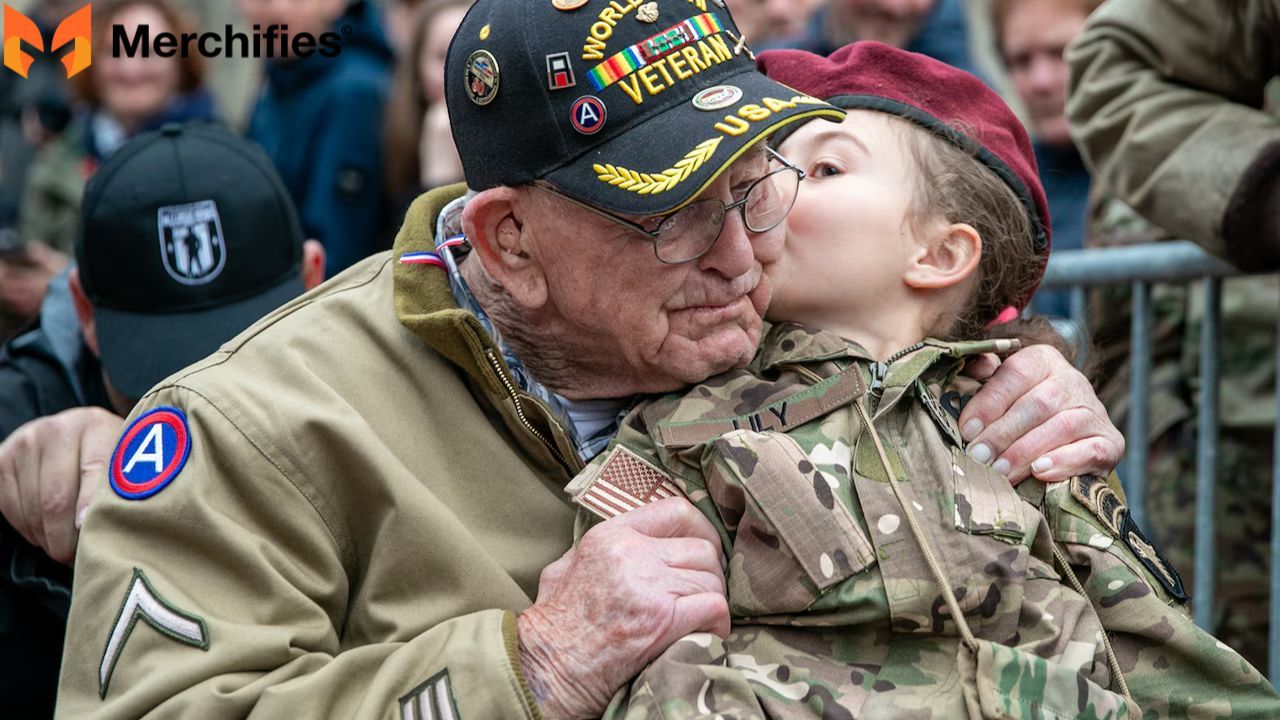
Blog Post Contents
When my grandfather came home from WWII in 1945, my grandmother had matching "Welcome Home Hero" shirts made for the entire family. That faded photo of them at the victory parade still sits on my desk today. Fast forward to 2024, and I watched my nephew design matching veteran shirts for his Iraq War veteran father and himself. Eighty years apart, same purpose: family unity through service recognition.
Family veteran shirts meaning goes far deeper than fabric and ink. These aren't just clothes—they're wearable stories, healing tools, and bridges connecting military service to family life. Whether it's a WWII grandfather's preserved uniform or a modern "Proud Veteran Dad" shirt, each piece carries profound significance.
This article explores how veteran family apparel has united families for over 80 years, shares real proud dad veteran shirt stories that will move you, and explains why these traditions matter more than ever.
The Deep Meaning Behind Family Veteran Shirts
Family veteran shirts symbolize something most civilians never think about: the entire family serves, not just the person in uniform.
When a soldier deploys, their spouse becomes a single parent overnight. Kids change schools every few years, losing friends each time. Military families sacrifice careers, proximity to extended family, and stability. Yet they receive no uniforms, no medals, no public recognition.
That's where veteran family shirts come in.
A "Proud Army Wife" shirt validates years of solo parenting during deployments. A "Military Brat" shirt helps a teenager explain their unconventional childhood to new classmates. A "Veteran Dad" shirt lets a former Marine maintain his military identity while coaching Little League.
These shirts make invisible sacrifices visible. They create instant recognition in grocery store aisles and airport terminals. Another military family spots the shirt and knows—they understand the lifestyle without explanations.
I've watched this happen countless times. Two military spouses strike up conversations in Target because one noticed the other's "Marine Corps Wife" shirt. Kids find each other on the first day at a new school through their military family shirts. Veterans connect at VA appointments through branch-specific apparel.
The meaning runs deeper than community connection, though. These shirts represent transition and achievement. Veterans struggle leaving military identity behind. Civilian life feels foreign after years in uniform. A veteran shirt provides a new "uniform" for civilian life, maintaining that hard-earned identity.
For children, these shirts teach values through visibility. When kids wear "My Dad is My Hero" shirts, they're learning about service and sacrifice. They're connecting to something bigger than themselves. They're understanding why their family moves frequently and why Dad sometimes seems distant after deployment.
Gold Star families—those who lost service members—wear memorial shirts as grief processing tools. These designs honor fallen heroes while helping families stay connected to military communities that understand their unique loss.
Every family veteran shirt tells a specific story. The meanings vary by family, by era, by circumstance. But they all serve the same essential purpose: making military family identity visible, valid, and valued.
How Veterans' Shirts United Families in the Old Days
The tradition of family veteran shirts started long before modern custom printing made them easy to create.
The WWII Homecoming Era (1940s-1950s)
Sixteen million Americans served in WWII. When they came home in 1945-1946, families needed ways to celebrate and reconnect after years of separation.
Local seamstresses created matching outfits for victory parades. Families coordinated patriotic colors for homecoming photos. Children too young to remember their fathers wore matching shirts to help them understand "this is Daddy."
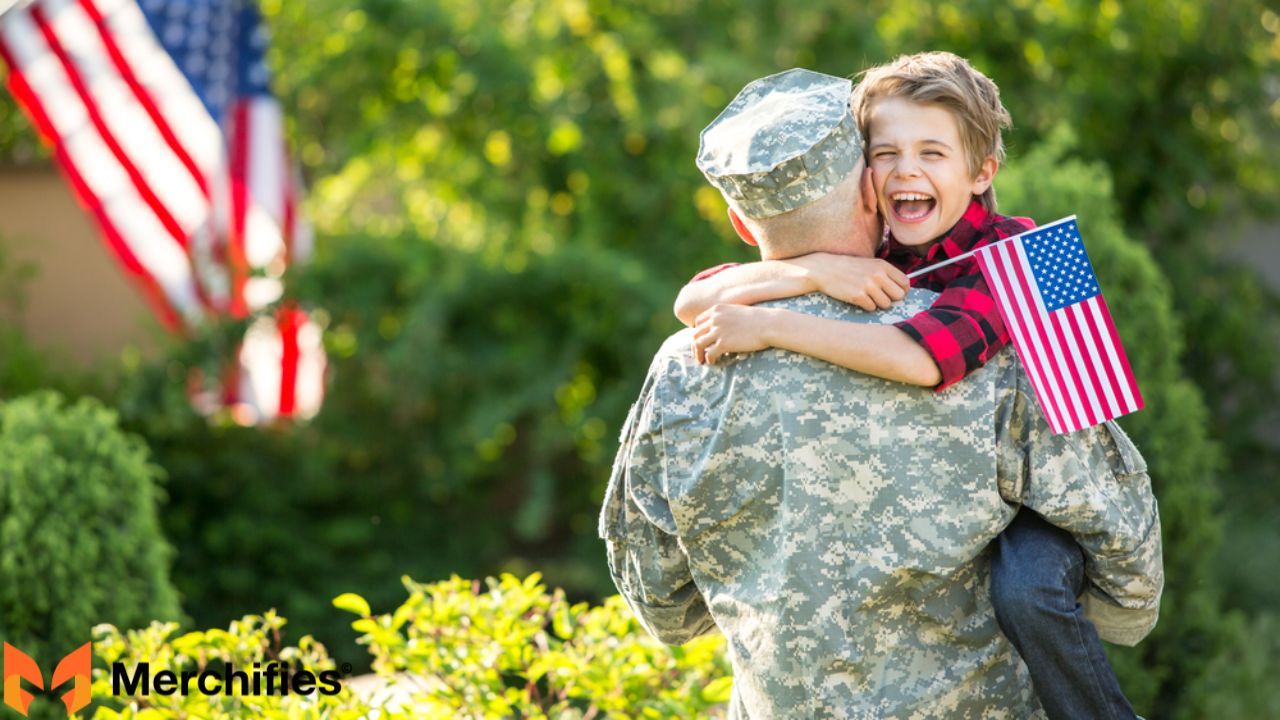
My grandmother's story reflects thousands of similar experiences. My grandfather left for the Pacific when my mother was six months old. He returned when she was three. She didn't recognize him. The matching family shirts became her comfort item, helping her accept this stranger everyone celebrated.
Post-war military surplus stores flooded America. Veterans brought home duffel bags full of military clothing. Kids grew up wearing Dad's oversized army shirts as pajamas and camping gear. These hand-me-down items became family treasures, physically connecting children to their father's service.
I still have my grandfather's WWII field jacket. My father wore it camping in the 1960s. I wore it to college in the 1990s. My nephew wears it now. That jacket has connected four generations to one man's service.
The Korean War Recognition Movement (1950s-1970s)
Korean War veterans faced a different challenge: being forgotten.
No victory parades greeted them. No national celebrations acknowledged their service. Many felt invisible, their sacrifices overlooked by a nation moving forward.
Military families compensated through grassroots efforts. Wives organized Korean War veteran family groups in the 1960s-1970s. They created matching jackets and shirts with "Korea 1950-1953 - We Remember" messaging. These families provided the recognition the nation didn't.
VFW and American Legion posts became family community centers. Saturday afternoons meant gathering at "the Post." Veterans wore their caps and post shirts. Wives wore auxiliary organization clothing. Kids wore miniature versions. These weekly traditions created extended chosen families among military communities.
A recent story illustrates this era's lasting impact. Korean War veteran Ray kept his 1953 discharge uniform for seventy years. Before passing in 2023, he requested a photo in that original uniform. His family shared the image online, and thousands of Korean War veteran families responded with similar stories of preserved uniforms and delayed recognition.
The Vietnam Era Healing Journey (1960s-1990s)
Vietnam veterans faced hostile homecomings. Many removed their uniforms in airport bathrooms before seeing family. They hid their service for decades.
By the 1980s-1990s, healing began. The 1982 Vietnam Veterans Memorial dedication became a turning point. Families started creating "Welcome Home" shirts decades after the war, providing recognition veterans never received.
These shirts facilitated conversations that had been silent for years. Adult children finally learning about their father's service. Veterans attending reunions for the first time. Families processing complex military experiences together.
The healing power of these shirts cannot be overstated. They gave Vietnam veterans permission to finally feel proud of their service. They opened dialogue between generations. They created community among veterans who'd felt isolated for decades.
Real Proud Dad Veteran Shirt Stories That Touch Hearts
Real stories bring meaning to life. Here are accounts from military families across generations.
The WWII Grandfather's Legacy
Thomas Morrison returned from Europe in December 1945. His three-year-old daughter Elizabeth didn't recognize him. Thomas's wife had matching "Welcome Home Hero" shirts made for the family. Elizabeth wore hers constantly for weeks, learning "this is Daddy."
Fast forward to 2023. Elizabeth's grandson Ian discovered the preserved shirt in his grandmother's attic. She shared the story of how it reconnected her with her father after years apart.
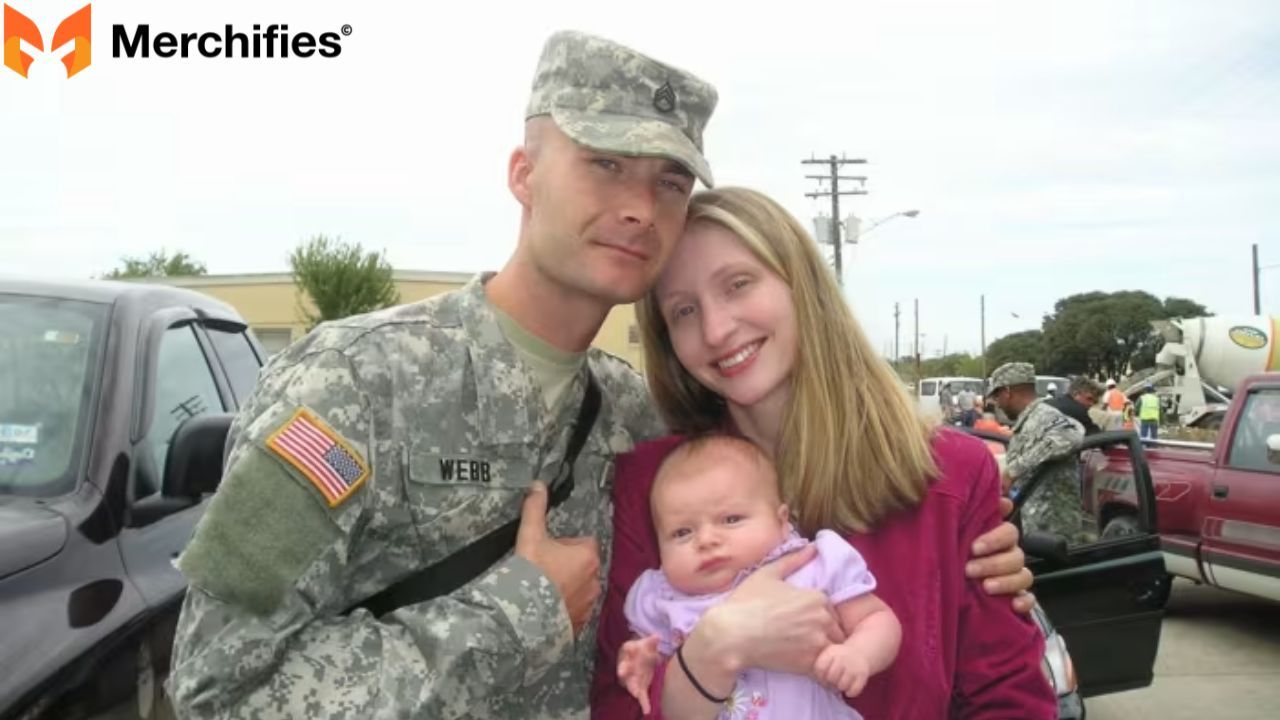
Ian designed modern replica shirts for the entire extended family. At Veterans Day 2023, five generations wore coordinated shirts honoring Sergeant Morrison's service. Ian shared the story on social media. It went viral. Dozens of families recreated their own WWII veteran traditions, connecting past to present through matching apparel.
That original 1945 shirt bridged an 80-year gap, teaching a new generation about their family's military legacy.
The Vietnam Veteran's Healing Shirt
Marine Corporal Marcus Williams returned from Vietnam in 1971. He removed his uniform in the airport bathroom and never discussed his service. His children grew up barely knowing he'd served.
In 1995, Marcus's son David gave him a Father's Day gift: a "Vietnam Veteran - Welcome Home" shirt. Marcus broke down crying. It was the first time anyone had thanked him for his service.
David asked: "Will you tell me about your service now?" Marcus finally shared his Vietnam experiences with his son.
Twenty-nine years later, Marcus wears Vietnam veteran shirts to every Memorial Day ceremony. David wears matching "Proud Son of Vietnam Veteran" shirts. Marcus's grandchildren wear "Vietnam Veteran's Grandkids" shirts. Three generations honoring service that was hidden for decades.
Marcus, now 78, says: "That shirt David gave me in 1995 saved my life. It let me be proud of my service finally. It healed my relationship with my son."
The Proud Air Force Dad at Graduation
Master Sergeant David Chen retired after 22 years in the Air Force. His daughter Lily graduated as high school valedictorian—her tenth school due to military relocations.
David wore a custom "Proud Air Force Dad" shirt to graduation. The back listed all ten schools Lily attended across seven states and two countries.
In her valedictorian speech, Lily referenced her father's shirt: "My father's shirt lists every place his service took our family. Each city taught me resilience. Each move taught me courage. I didn't graduate from one high school—I graduated from a military childhood."
The audience gave a standing ovation. Other military parents cried, seeing their own experiences honored.
Lily, initially embarrassed by the shirt, requested her own: "Air Force Kid - 10 Schools, 7 States, 2 Countries, 1 Amazing Childhood."
That shirt transformed Lily's perspective from resentment to pride. Now pursuing her PhD, she credits her military childhood for her resilience.
The Father-Son PTSD Healing
Army veteran Marcus Johnson struggled with PTSD after Afghanistan deployment. His eight-year-old son Tyler was confused and scared by Dad's behavior.
A VA therapist suggested designing something together. Marcus and Tyler spent afternoons creating matching shirts:
- Marcus's: "Army Veteran Dad - Still Fighting, Now for My Family"
- Tyler's: "Veteran's Son - My Dad is My Hero"
The design process opened conversations. Tyler asked questions. Marcus shared age-appropriate stories. The activity became therapy.
At a VA family event, they wore their matching shirts. Other kids approached Tyler, asking about his dad. Tyler proudly explained his father's service.
Marcus felt his first positive emotion about military experience since deployment.
Eight years later, Tyler is sixteen and they still design new matching shirts annually. Marcus says: "That shirt gave my son language to understand my service. When I struggle with PTSD, he puts on his shirt and says, 'We're a team, Dad.' That shirt saved our relationship."
The Three-Generation Photo
Veterans Day 2024. Three generations gathered for a photo:
- Grandfather Robert (82): WWII Navy veteran
- Father James (58): Vietnam Army veteran
- Son Michael (28): Iraq War Marine veteran
Each wore their era's veteran shirt. Combined: 80+ years of military service across three wars and three branches.
The family shared the photo online: "Three wars, three branches, 80 years of service, one family's commitment to country."
It went viral. 50,000+ shares in 48 hours. Thousands of military families shared their own multi-generational photos. Local news featured the family. The VFW used the photo in their Veterans Day campaign.
Those shirts created a visual representation of family legacy. Each told a specific story. Together they illustrated generational commitment to service.
Robert's great-grandchildren—Michael's kids—received "4th Generation Military Family" shirts. They're learning family history through the stories those shirts prompt.
Different Types of Family Veteran Shirts and What They Mean
Understanding specific shirt types helps you choose meaningful designs for your family.
Proud Veteran Dad Shirts
These celebrate dual identity: veteran and father. They acknowledge that military service shaped parenting approaches and family values.
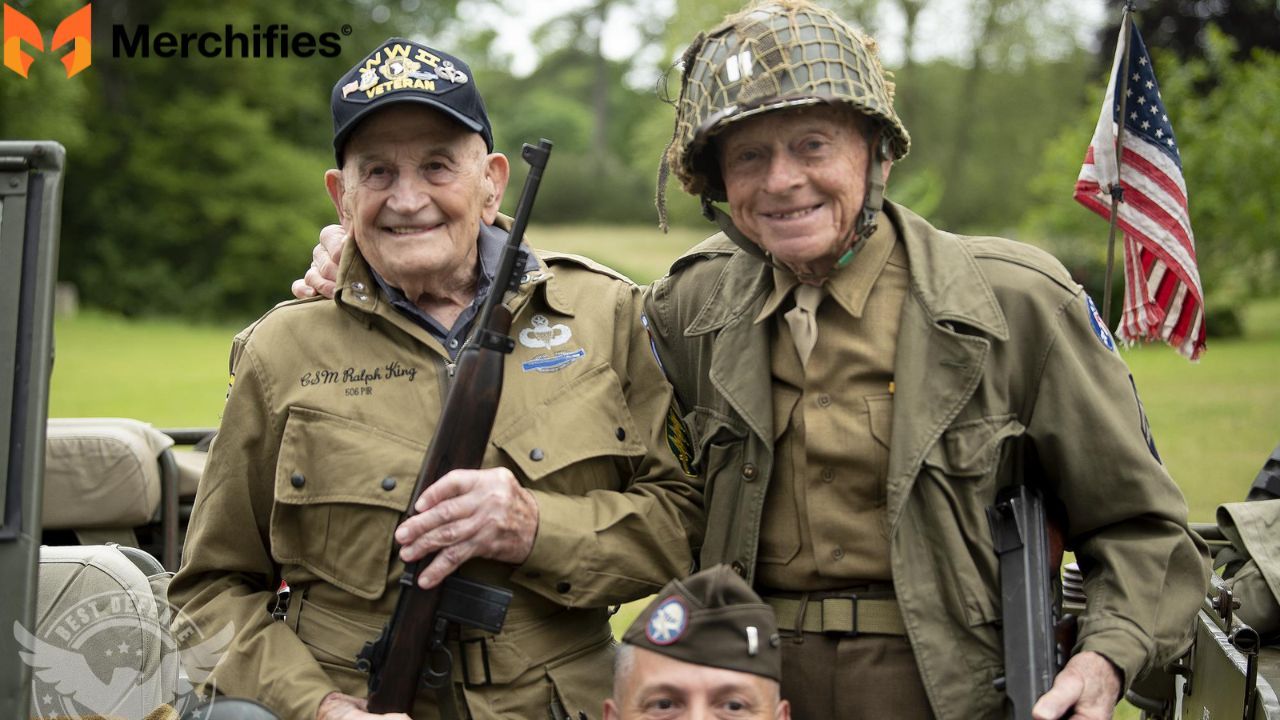
"Proud Marine Dad" or "Army Veteran Father" shirts maintain military identity while emphasizing current family role. They tell the world: "My service matters, but my children matter more."
Veterans wear these to children's school events, sports games, and family gatherings. They create conversation starters about service while keeping focus on family.
The psychological importance cannot be overstated. Many veterans struggle with identity after leaving military life. These shirts bridge that gap, validating both their past service and current role.
Military Spouse Shirts
"Proud Army Wife" or "Military Mom" shirts validate the often invisible service of spouses who hold families together during deployments.
These designs acknowledge solo parenting, career sacrifices, and emotional resilience. They create recognition for family members who served without uniforms.
Military spouses find each other through these shirts. Support networks form in commissaries, playgrounds, and schools when one spouse spots another's military apparel.
The language matters. Good designs clearly indicate "spouse of" rather than implying the wearer served. Respect for actual service while honoring support roles.
Military Kid Shirts
"Military Brat" has become a badge of honor. These shirts help children explain their unique upbringing and find peers with similar experiences.
For young kids, simple "My Dad is My Hero" designs work perfectly. For teens, more sophisticated "Raised by a Veteran" or "Military Kid - [Number] Schools, [Number] States" designs resonate better.
These shirts reduce isolation. Military kids moving to new schools wear them on the first day, helping other military kids find them. Instant community in unfamiliar places.
They also validate sacrifices children make—missed birthdays during deployments, losing friends with each move, and understanding why Dad seems different sometimes.
Veteran Supporter Shirts
Critical distinction: these explicitly state support WITHOUT claiming service.
"Veteran Supporter," "I Support Our Veterans," or "Proud Sister of a Veteran" language makes clear the wearer didn't serve but respects those who did.
This matters deeply in military communities. Stolen valor—falsely claiming service—is taken seriously. Supporter shirts allow everyone to show respect while maintaining honesty about their own background.
Extended family, friends, and community members wear these to veterans' events, showing solidarity without overstepping boundaries.
Gold Star Family Shirts
These carry immense emotional weight. Gold Star families have lost service members killed in action.
Memorial designs honor fallen heroes: "Proud Wife of Fallen Hero" or "Gold Star Son" shirts acknowledge ultimate sacrifice while maintaining connection to deceased service members.
These shirts help Gold Star families find each other at support events. They prompt thank-yous from veterans and community members. They keep memories alive.
Designing these requires extreme sensitivity and respect. They're grief processing tools, not fashion statements. Many Gold Star families treasure these shirts as wearable memorials to their loved ones.
How to Choose Meaningful Family Veteran Shirts
Choosing the right veteran family apparel requires thought and consideration.
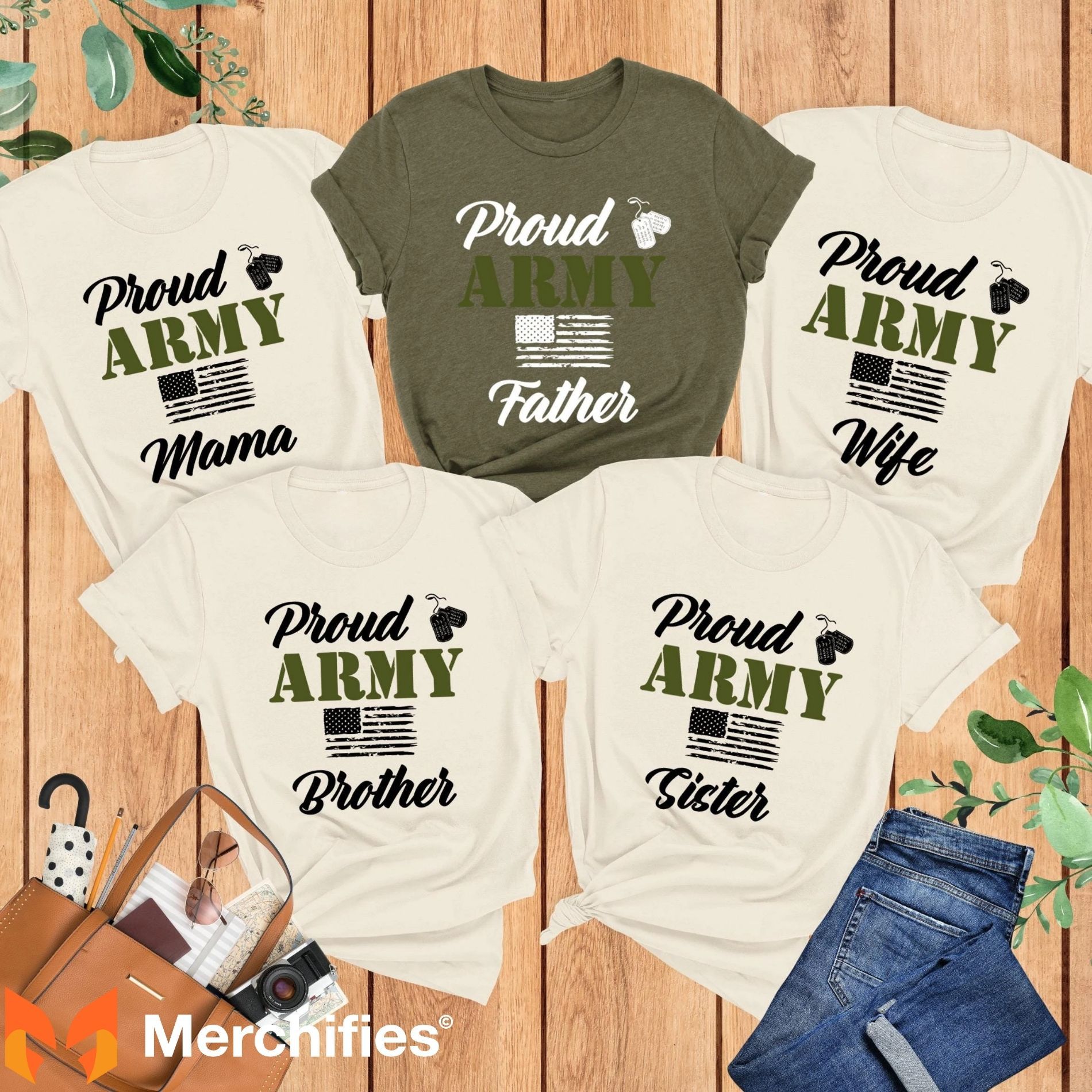
For Veterans Themselves
Ask yourself: Am I comfortable with public recognition? Some veterans love acknowledgment. Others prefer privacy. There's no wrong answer, but know your comfort level before wearing veteran identification publicly.
Which aspect of service do I want to highlight? Branch pride, specific conflict, years served, or general veteran status? Your shirt can be specific ("Iraq War Veteran 2003-2009") or general ("U.S. Army Veteran").
Make sure designs accurately represent your actual service. Never claim ranks, units, or awards you didn't earn. Authenticity matters to both you and the military community.
For Spouses and Children
Always ensure the veteran is comfortable with your shirt choice. Their service, their comfort level determines what's appropriate.
Use clear language that doesn't imply service you didn't perform. "Army Wife" is accurate. Wearing military rank insignia is not. The distinction matters.
For children's shirts, choose age-appropriate designs. Young kids need simple, positive messaging. Teens need cooler aesthetics they'll actually wear. Adult children can handle more sophisticated legacy designs.
For Everyone
Avoid anything that could appear as stolen valor. Never wear medals, ribbons, or official military insignia you didn't earn. Stick to general patriotic themes and clear family relationship language.
Consider where you'll wear the shirt. Casual everyday wear? Special events only? Professional contexts? Choose designs appropriate for your intended use.
Think about the conversations the shirt will prompt. Are you prepared to answer questions? Redirect thanks to the actual veteran? Explain your family member's service?
Quality matters. These aren't throwaway fast fashion items. Choose well-made shirts that will last, especially for items with deep personal meaning.
When and Where to Wear Family Veteran Shirts
Knowing appropriate occasions helps you honor service respectfully.
Veterans Day and Memorial Day events are perfect occasions. These holidays specifically honor military service. Wearing family veteran shirts shows respect and participation.
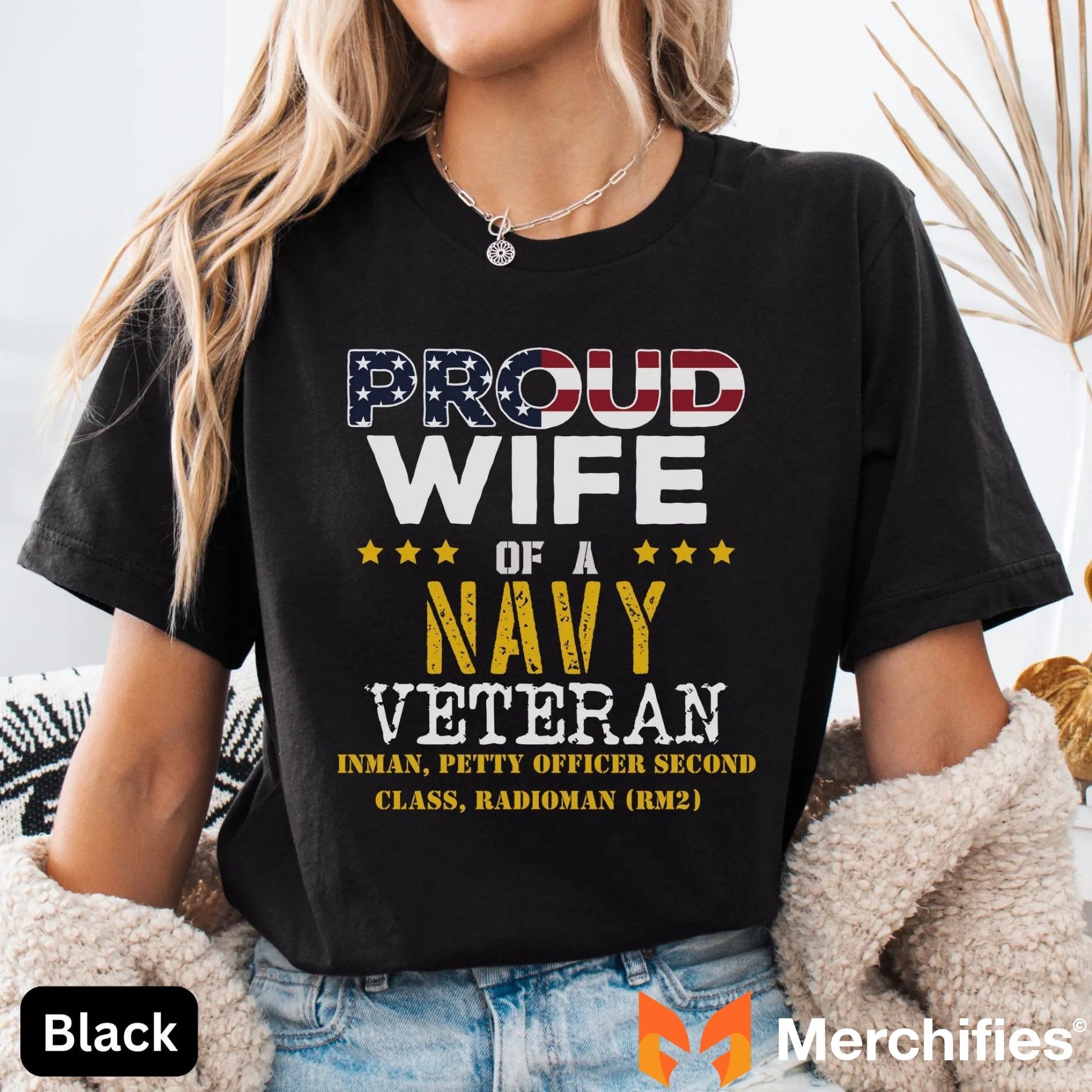
Fourth of July celebrations embrace patriotic themes. Veteran family apparel fits naturally into these festivities.
Military reunions, homecomings, and deployment send-offs are ideal times. These military-specific events welcome and expect veteran family identification.
Family gatherings with military themes provide perfect opportunities. When multiple generations of veterans gather, coordinated family shirts create powerful visual statements about family legacy.
Casual everyday wear is completely appropriate. Grocery shopping, errands, kids' activities—veteran family shirts work for normal daily life. They're not just for special occasions.
Some contexts require consideration. Formal business environments may not be suitable unless it's a designated military appreciation day. Client-facing professional meetings typically call for traditional business attire. Know your workplace culture.
Airports commonly feature veteran apparel. Many travelers wear them, and some airlines offer priority boarding for military families. Generally well-received and appreciated.
The key is authenticity. Wear these shirts when they genuinely represent your family identity, not as costume or attention-seeking. The military community notices the difference.
Creating Your Own Family Veteran Shirt Tradition
Starting your own tradition connects your family to 80 years of military family heritage.
Begin with research. Interview veteran family members about their service. Request military records if needed. Gather photos, documents, and stories. The more you know, the more meaningful your designs become.
Involve the veteran in design decisions. Their input ensures authenticity and respects their service. Some veterans want specific units mentioned. Others prefer general recognition. Their choice matters most.
Consider matching family sets for special occasions. Grandfather, father, and son in coordinated designs. Entire family in branch-specific colors. Visual unity creates powerful photos and memories.
Take annual photos documenting the tradition. These create visual family archives. Years later, you'll treasure these images showing family growth while honoring military service.
Share stories while wearing the shirts. Don't just put them on—use them as storytelling prompts. "This shirt represents when Grandpa served in WWII. Let me tell you about that time..."
Preserve both the shirts and the stories. Frame special designs with photos. Create shadow boxes with military items. Document everything so future generations understand the significance.
Plan how to pass items down. Who receives which shirts? What stories accompany them? Creating continuation plans ensures traditions survive generations.
My family's tradition started with that 1945 homecoming photo. It continued through my father's Vietnam service. Now my nephew's generation carries it forward. Each generation adds their chapter while honoring those who came before.
The Lasting Impact of Family Veteran Shirts
After working with military families for years and coming from a military family myself, I've seen these shirts' profound impact firsthand.
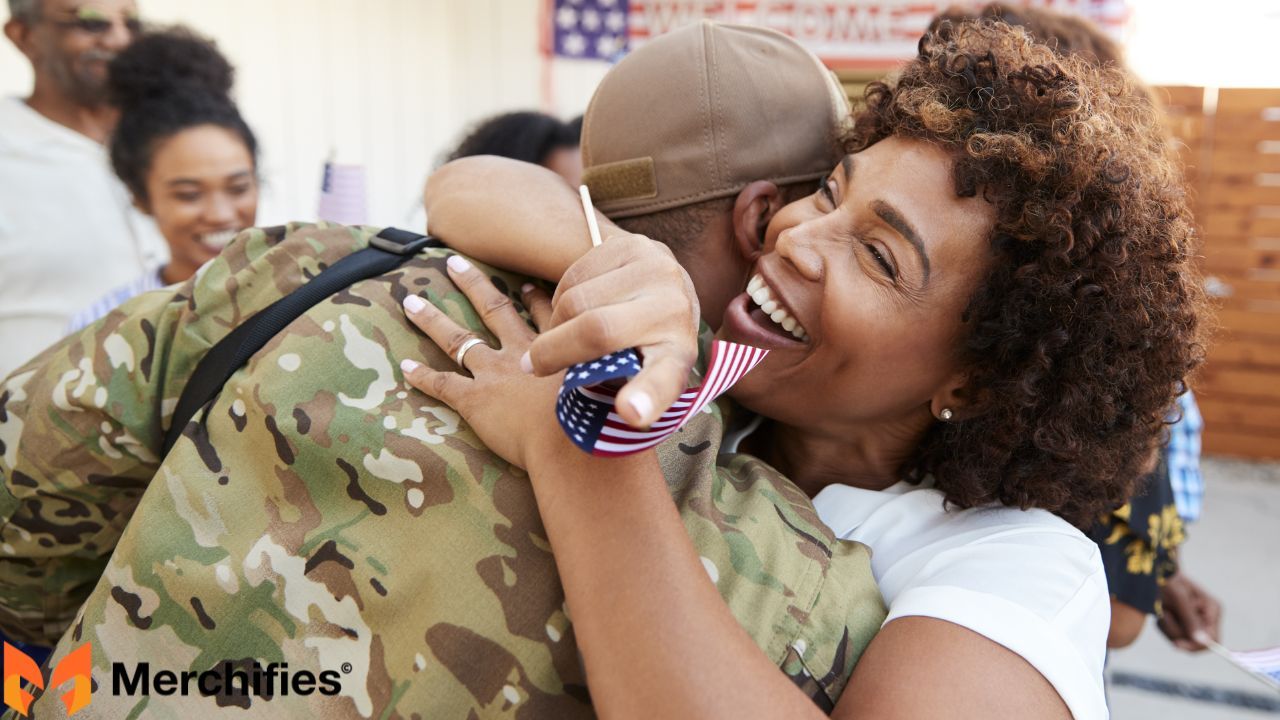
They heal relationships damaged by PTSD and deployment trauma. They validate children's unconventional upbringing. They connect military families in civilian communities. They maintain veteran identity during difficult transitions.
These aren't just shirts. They're tools for connection, healing, recognition, and legacy preservation.
The family veteran shirts meaning encompasses shared sacrifice, community recognition, achievement symbols, generational pride, and memorial significance. Each shirt tells a unique story while participating in an 80-year tradition.
The proud dad veteran shirt stories shared here—from WWII grandfather to modern Marine father—illustrate clothing's power to bridge generations, heal wounds, and honor service.
Whether you're a veteran choosing your first recognition shirt, a spouse seeking acknowledgment, a child wanting to honor a parent's service, or someone starting a new family tradition—you're participating in something bigger than yourself.
You're connecting to millions of military families across eight decades who've used clothing to make the invisible visible, to create community, and to pass down stories of service and sacrifice.
Start your tradition today. Research your family's military history. Design something meaningful. Take that first photo. Share those stories.
Eighty years from now, your great-grandchildren might discover those photos and shirts in an attic somewhere. They'll learn about your family's service. They'll feel connected to ancestors they never met.
That's the real family veteran shirts meaning—creating bridges across time, connecting generations through service, and ensuring no sacrifice goes unremembered.
Frequently Asked Questions
Can civilians wear veteran support shirts if they never served?
Yes, absolutely—if the shirt clearly indicates support rather than claiming service. Use explicit language like "Veteran Supporter" or "Proud Sister of a Veteran." This shows respect while avoiding any appearance of stolen valor.
What's the meaning behind family veteran shirts?
Family veteran shirts symbolize shared sacrifice, community recognition, achievement, generational pride, and memorial significance. They validate entire families' service, not just the veteran's. They create visual identity in communities and teach military values to children.
How did veteran shirts unite families in the old days?
Starting in the 1940s, families wore matching outfits for WWII homecomings. Korean War families used shirts for grassroots recognition. Vietnam veterans found healing through delayed "Welcome Home" designs. VFW family days featured coordinated apparel creating extended military family networks.
Should children wear veteran family shirts to school?
Generally yes—it's a positive family identity expression. Prepare children to answer basic questions about their military family. Be aware it may prompt more questions during active military news cycles or deployments.
How do I preserve vintage veteran shirts?
Store in acid-free containers away from light and moisture. Consider professional textile preservation for extremely valuable items. Frame for display with UV-protective glass. For irreplaceable pieces, create replicas for wearing while preserving originals.
What makes proud dad veteran shirt stories meaningful?
Authentic emotion, real family connection, specific details, healing elements, and generational impact. The best stories show how shirts facilitate relationships, open conversations, and help families process military service together.
Your family's military story deserves recognition. Your veteran deserves honor. Your traditions deserve continuation.